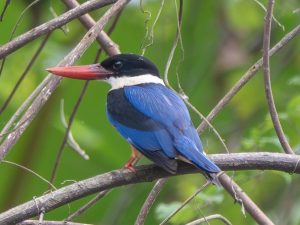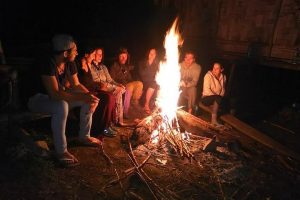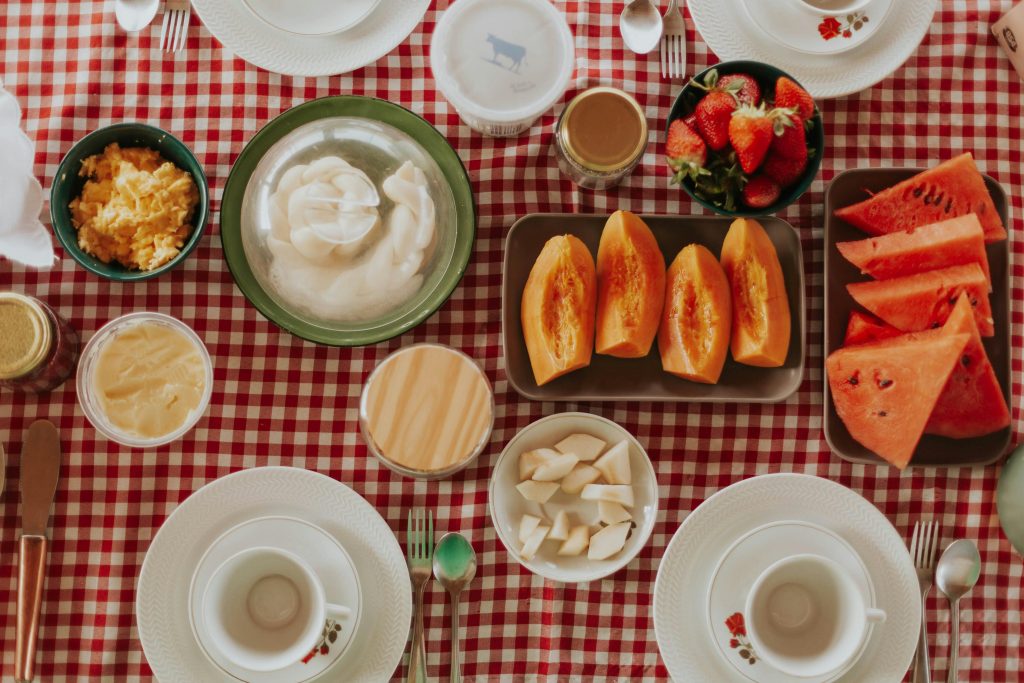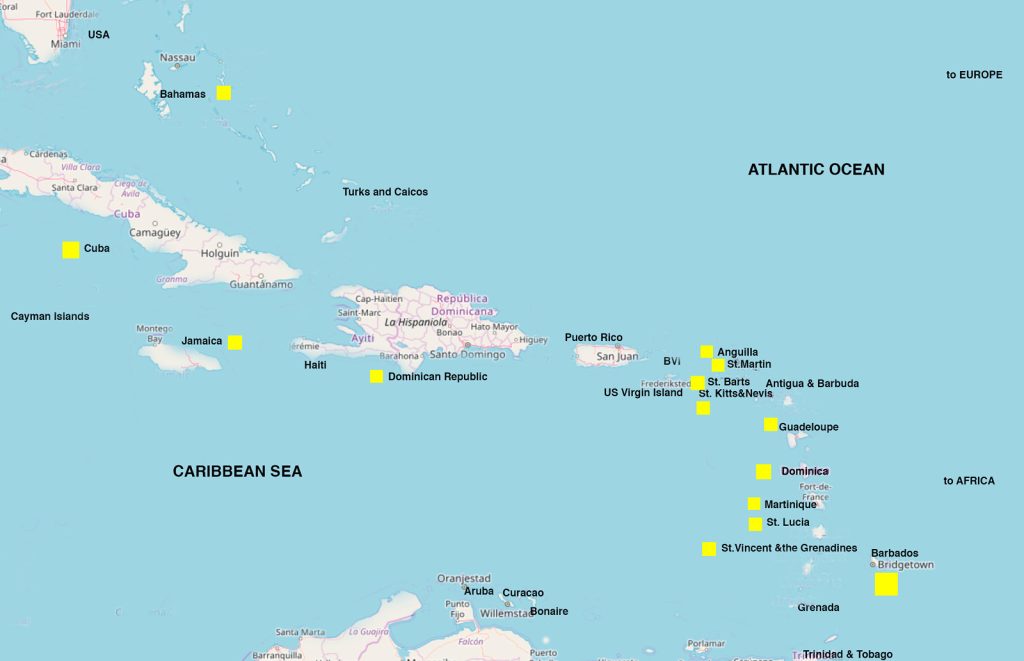Wildlife species
The Night Safari trip’s highlight is nighttime wildlife spotlighting: long-tail boats drift down the Nam Nern River in search of wildlife, including sambar deer, muntjacs, civets, green water dragons, slow and pygmy lorises, otters, pythons, and more.
The Nam Nern area also offers excellent birdwatching opportunities. You may spot several kingfisher species, including Blyth’s kingfisher, as well as fish owls, red-collared woodpeckers, and a wide array of other owls, herons, pheasants, and passerines. See what others have seen on E-bird.
Day 1: Travel inside the National Park.
Morning
A minivan will meet you at your guesthouse in Muang Hiem around 8 am. After a 1.5-hour drive along a winding road through scenic mountainous landscapes, you will arrive at Ban Son Koua, an ethnic Khmu village, where the Nam Nern Night Safari tour begins.
Note if traveling from Phonesavan or Sam Neua, you can go directly to Ban Son Koua (see “Getting to the National Park” for more details). All visitors should arrive at Ban Son Koua by 10 am for the tour start.
In Ban Son Koua, meet your National Park’s English-speaking guide, who will provide information about the park and translate insights from village wildlife spotters (former poachers) in Lao, Hmong, and Khmu languages.
At 10 am, the tour begins with a short village walk, where a local guide will introduce you to daily life and animist traditions. At around 11 am, embark on a 1.5-2 hour boat ride on the Nam Nern River towards the National Park’s Total Protection Zone and the tourism camp near the ranger substation. Along the way, you’ll pass village upland farms and enjoy birdwatching as you approach the park boundary.
Afternoon
Once arrived at the tourism camp, enjoy Lao lunch prepared by the village cooking group. After lunch, National Park’s staff will share a presentation about the Nam Et-Phou Louey National Park and the on-the-ground efforts in protecting wildlife. After, you will then be shown to your bamboo bungalows. Free time to relax at the camp.
Optional: The National Park’s guide will invite you on an optional jungle walk around the camp to learn about the use of medicinal plants and the history of the camp site, which was once a village. Depending on the ranger availability, the park substation can be visited to learn about the law enforcement work.
At late afternoon, the group takes the boat again to continue the journey upriver deeper inside the National Park. Enjoy birdwatching and the village wildlife spotters / boatmen might point out evidence of wildlife, such as tracks or scat if spotted at the riverbanks.
Dinner and Evening
The boats continue upriver to the dinner site, a sandy, flat bank, where visitors can swim and enjoy relaxing around a campfire while team prepares the dinner. After dinner, with the help of the National Park’s English-speaking guide discuss around a campfire with the wildlife spotters/former poachers. Great opportunity to ask all the questions that you might have! Afterwards, the village guide will introduce the species of animals that might be seen during the spotlighting and explain the rules and expectations for spotlighting.
The group departs for the night wildlife spotlighting once it is total dark, drifting silently down the river with the engines switched off. The wildlife guides and boatmen use their headlamp to spot wildlife. If they see something, they will give a clear sign. Then you can switch on your own flashlight to have a better look at the animal. Hence, tourists will have their flashlights switched off most of the time to avoid scaring animals. The wildlife spotter and boat drivers communicate via hand signals to avoid talking that might disturb the animals. Animals that can be seen include Sambar deer, barking deer, various species of Civets, Spotted Linsang, Otters, Slow Loris, Porcupines, Owls. Seeing wild cats and beers is very rare, but not impossible!
Night
Overnight in Lao style bungalows. Before falling asleep in your jungle bungalow, do not hesitate to spotlight around your bungalow as a Slow Loris, Civet or Sambar Deer can be just next to your jungle accommodation.
Day 2: Return
Morning
Early wake up. Enjoy breakfast. After breakfast, the boats will return to the village. First, boatmen will drift down silently the river with the engines switched off. Possibility to spot otters, Sambar deer, and numerous bird species.
Optional: If the jungle walk around the camp was not done during the first day, then it can be done in the morning of the second day. National Park’s guide will make this decision based on the timing.
Return
Upon arrival in the village around 9.30AM, you are invited to fill out a wildlife monitoring form that is used to monitor wildlife abundance and indicate the amount of bonuses put into the 14 Night Safari ecotourism village development fund from the tour costs (there is no extra fee for any seen wildlife).
Return to Muang Hiam at around 10 AM. After approximately 1.5 hour drive, around noon, you will arrive to Muang Hiam.
If you wish to continue to Phonsavanh or Sam Neua, transfer can be arranged to Kohing junction where a local bus passes by at around noon. To arrange this transfer, please inform us and your guide before the tour start.
What is included
- National Park’s Entrance Fee
- Village Ecotourism Benefit Fund Fee
- District Office of Information, Culture & Tourism Fee
- National Park’s English Speaking Guide
- Village team services: wildlife spotter, boatmen, cleaning, cooking, and handicraft group
- Boat service fee and petrol
- Food and water
- Sleeping equipment (Mattress, Mosquito net, Pillow and Blanket)
- Life jackets and helmets for the boat trip
- Flashlights
- 15-20L Dry bags for your important personal items
Packing List
Bag note. Please bring just one small bag/backpack to the forest. You can leave large bags in the national park office, in the village or in your car.
Weather note. Weather can be both hot (30’c +) during the daytime and cold (below 10’c) at night. It is recommended that you bring clothes for both extremes.
Please pack the following items:
- Light rain, wind jacket
- Warm fleece jacket
- Both sun hat for daytime and Wool hat for night
- Long-sleeved shirts and trousers are most suitable
- Shoes for short walking and Sandals for the boat trip and bathing
- Clothes for bathing (shorts and t-shirt). Please, no nude/bikini bathing.
- Clothes for sleeping
- Insect repellent
- Snacks (Lao food is provided, but you might want to bring something to snack on)
- Towel and toiletries.
- Ear plugs. Boat engine and forest sounds at night can be quite loud.
- Reusable water bottle (help us to reduce waste)
- Binoculars. We have a few binoculars available to borrow.






